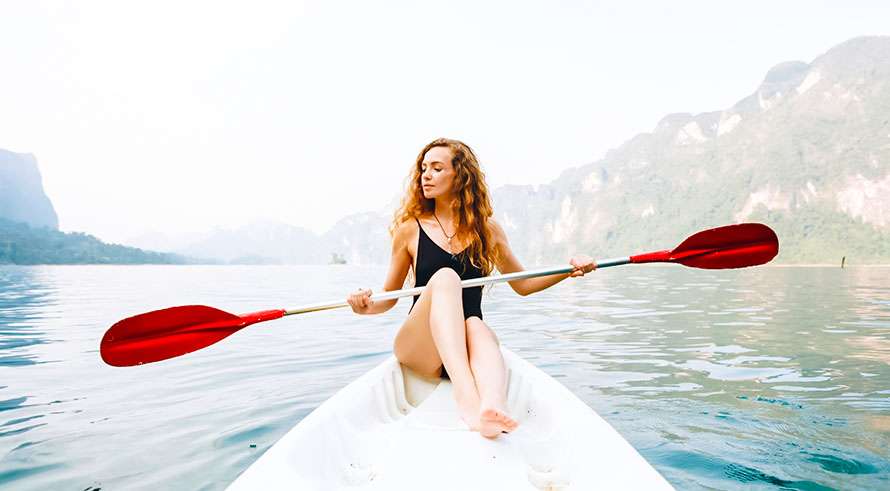Whether you want to improve your canoeing, sea kayaking or whitewater skills, the facts are hard to ignore—taking a lesson will help you paddle better, have more fun, and reduce the chance of a bad experience.
1. Have More Fun
This is why you’re here. With a few lessons you should feel a difference in your paddling. Improvement should be measurable, and you should feel like you made breakthroughs. It might be getting a roll, or surfing with greater reliability. Imagine, getting on the surf wave every time you try. Would that be worth it?
2. Reduce the Chance of a Bad Experience
Maybe you’ve seen people who have had a bad experience from trial-and-error learning. This approach to paddling can be cold, wet and a lot less fun than the sport is supposed to be. Paddling is often counterintuitive: To roll, you keep your head down. When you float into a rock, you lean toward it, not away from it. Instinct can lead you astray. A practiced instructor can save you the pain of learning from bad experiences.
3. A Three-day Investment
Once you take a class, you don’t have to stay in instruction for long. Three or four days is ideal for teaching the basics and impacting a student’s progress; you can develop a solid foundation of skills far quicker than if you learn piecemeal from friends, or by trial and error. Let someone else handle the logistics and pick the river. You just paddle.
4. The Money Argument
Still not convinced? Consider your wallet. A typical class runs $120-160 a day, depending. As part of the class you get to try different boats and gear so you’ll be able to make an educated decision before buying. Also, many schools provide discounts toward your next purchase. And besides, what use is that $1,000 surf boat if you can’t get to the wave?
5. The Best Part
Now for the best part: Class atmosphere is fun. Learning happens best when everyone lets down their guard and loosens up. Instructors are frequently able to spark a strong spirit within the group. Best of all, by taking a class you can meet other people at your skill level, so you can continue getting out on the river.
6. Picking a School
When looking for a school, word of mouth rules. The best schools have glowing reputations, so ask other paddlers, particularly in the local club. Here are some questions to ask: What sort of instructor-student ratios are typical? Five to one is the industry standard. What is the typical size of classes? Eight to 10 is ideal. (When instructors teach together, they tend to learn more tricks, which helps the student.) How diverse is the teaching staff? A school with a wide mix is best. Do instructors have any formal training, experience out of the region, safety training from a national organization, or ACA certification? (Not required, but a good symbol of professionalism.)

